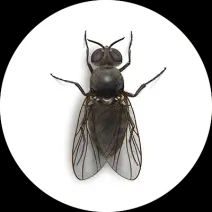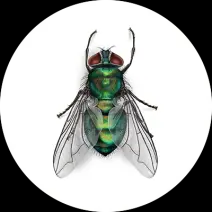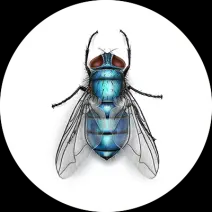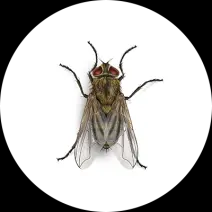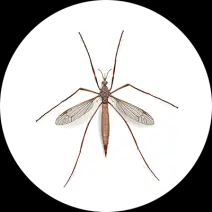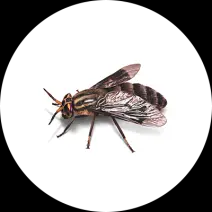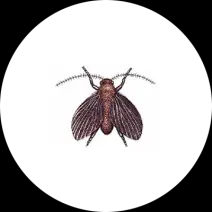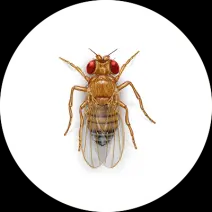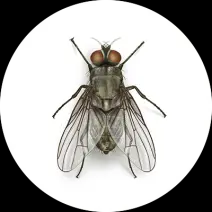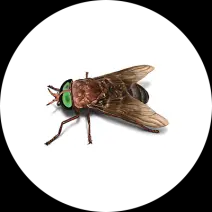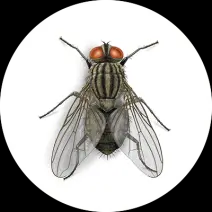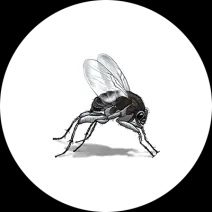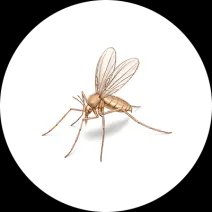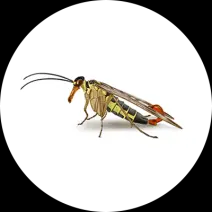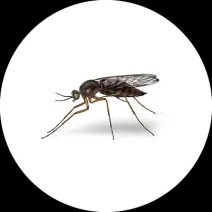
Fly Facts & Information
Types of Flies
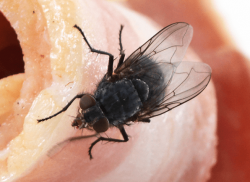
Flies are a diverse group of insects that are found all over the world. They belong to the order Diptera, which means “two wings,” and are characterized by their two wings and ability to fly. Flies are known for their rapid and agile flight, which allows them to easily avoid predators and capture prey. They have large compound eyes that give them a wide field of vision, and a pair of short antennae that help them sense their environment. Flies have a wide range of diets and can feed on a variety of foods, including nectar, fruit, blood, and decaying organic matter. Some species of flies are important pollinators, while others are considered pests or disease vectors. Flies undergo complete metamorphosis, which means that they go through four distinct life stages: egg, larva, pupa, and adult. While some species of flies are beneficial to humans and the environment, others can be a nuisance or a health hazard, and may need to be controlled using various methods.
There are many different types of flies, each with their own unique characteristics. Here are some common types of flies and their distinguishing features:
1. House Fly: This type of fly is a common pest found in homes and other indoor spaces. They are gray in color, with four black stripes on their thorax. House flies are attracted to decaying organic matter, and can transmit diseases to humans and animals.
2. Fruit Fly: Fruit flies are small, reddish-brown flies that are attracted to overripe or decaying fruit. They have red eyes and a round body, and are commonly found in kitchens and other areas where food is stored.
3. Blow Fly: Blow flies are large, metallic-colored flies that are attracted to dead animals and other decaying organic matter. They lay their eggs on the carcass, and their larvae feed on the decomposing flesh.
4. Horse Fly: Horse flies are large, biting flies that feed on the blood of horses and other livestock. They are brown or black in color, with large eyes and a stout body.
5. Deer Fly: Deer flies are similar to horse flies, but are smaller and have a darker body color. They are also known for their painful bite, which can cause swelling and itching.
6. Cluster Fly: Cluster flies are similar in appearance to house flies, but are larger and have a slower, more sluggish flight. They are typically found in large numbers in attics and other indoor spaces during the fall and winter months.
7. Mosquito: Mosquitoes are small, flying insects known for their painful bite and ability to transmit diseases such as malaria and dengue fever. They are attracted to humans and other animals by the carbon dioxide we exhale.
8. Crane Fly: Crane flies are often mistaken for large mosquitoes, but do not bite or feed on blood. They have a slender body and long, delicate legs, and are commonly found in damp areas such as marshes and wetlands.
9. Housefly Maggot: The housefly maggot is the larval stage of the house fly. They are creamy white in color, with no legs and a tapered, cylindrical shape. Housefly maggots feed on decaying organic matter, and can be used in composting to help break down food waste.
10. Tsetse Fly: Tsetse flies are found in sub-Saharan Africa, and are known for transmitting sleeping sickness, a disease caused by a parasite that affects both humans and animals. They are similar in appearance to house flies, but have a distinctive hump on their thorax.
Overall, flies can be a nuisance and a potential health hazard, but they also play important roles in ecosystems as pollinators, decomposers, and prey for other animals.
